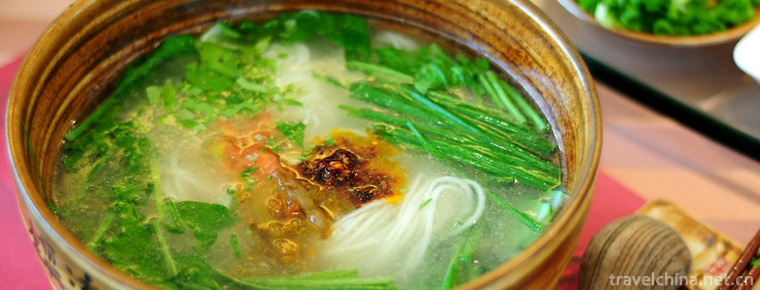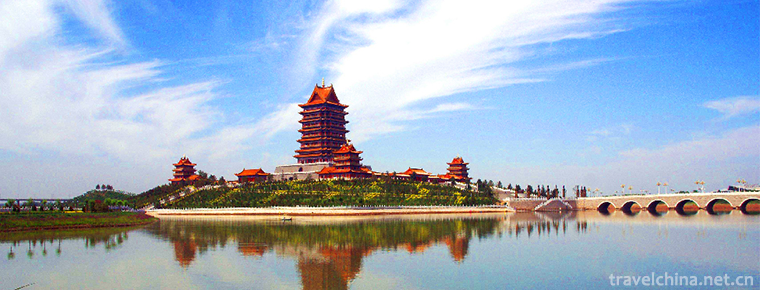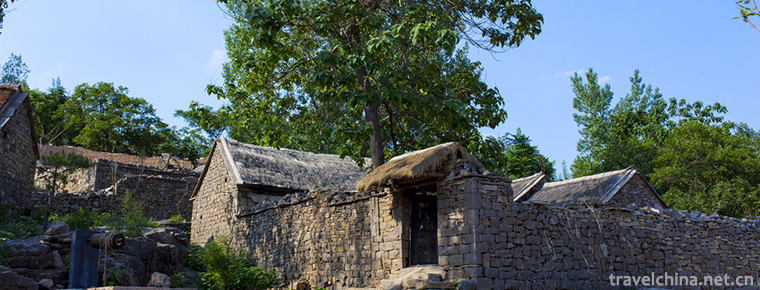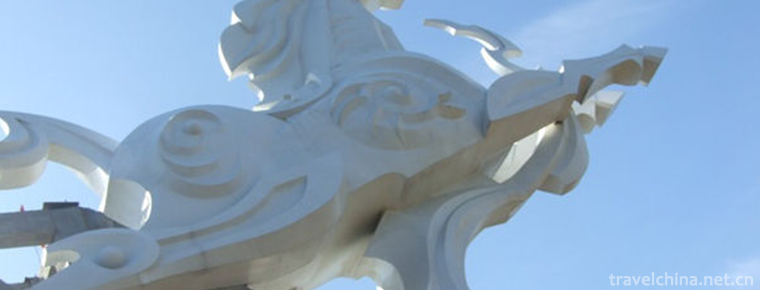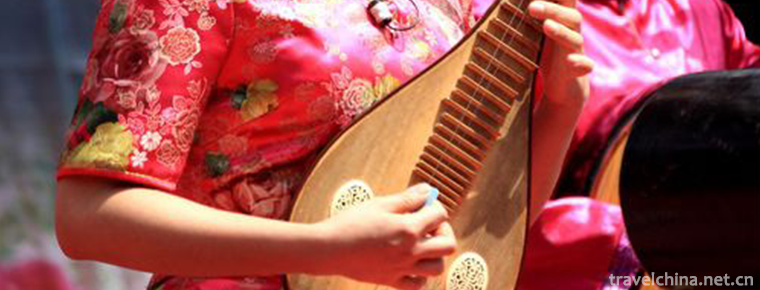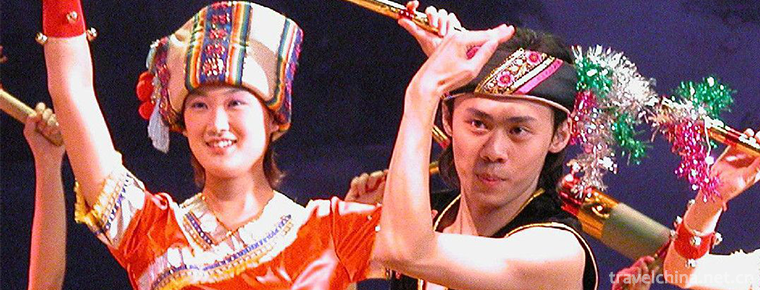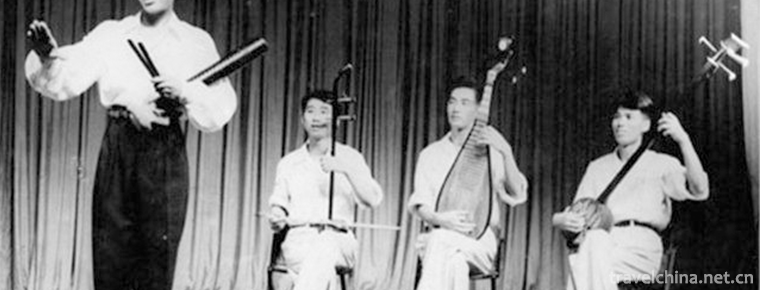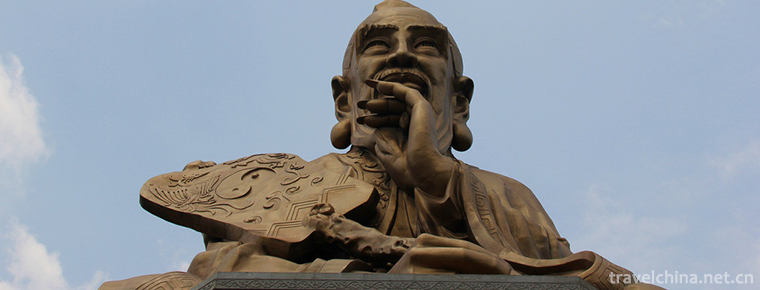Tianyi Pavilion and Yuehu Lake Scenic Area
Tianyi Pavilion is located in Haishu District, Ningbo City, Zhejiang Province. It was built in the middle of Ming Dynasty. It was presided over by Fan Qin, the right waiter of the Ming Dynasty's military department who retired at that time. It covers an area of 26,000 square meters. It has a history of more than 400 years and is a representative work of Chinese book collection culture.
Tianyi Pavilion is the earliest private library in China. It is also one of the oldest libraries in Asia and the earliest three family libraries in the world.
In 1982, Tianyi Pavilion was announced by the State Council as a national key cultural relics protection unit, and now it is a national AAAAA-level tourist attraction.
On October 17, 2018, the Ministry of Culture and Tourism publicized nine national 5A-level tourist attractions, including Tianyi Pavilion.
brief introduction
Tianyi Pavilion, located in Haishu District, Ningbo City, Zhejiang Province, is the earliest private library in China. It is also one of the oldest existing libraries in Asia and the oldest three family libraries in the world. Tianyi Pavilion covers an area of 26,000 square meters. It was built in the mid-Ming Dynasty and was presided over by Fan Qin, the right-hand waiter of the then retired military department. In 1982, it was announced by the State Council as a national key cultural relic protection unit. There are nearly 300,000 volumes of all kinds of ancient books, of which 80,000 volumes are precious, especially the local chronicles and imperial examinations of the Ming Dynasty.
With the rapid development of our library, we have successively added Chinese local chronicles collection museum, Yintaidi official residence museum, mahjong origin exhibition hall and other places. Shuge is a wooden two-story hard hilltop building with a height of 8.5 meters.
There are six corridors at the bottom and six at the depth. The second floor is a large hall apart from the stairwell, spaced by bookcases.
In addition, the "Tianyichi" Tongyue Lake in front of the building is also excavated, which not only beautifies the environment, but also stores water to prevent fire. The architectural layout of Tianyi Pavilion was later imitated by other libraries.
Found
Tianyi Pavilion was built between 1561 and 1566 in Jiajing, Ming Dynasty. It was a private library built by Fan Qin, the right attendant of the military department of Ming Dynasty at that time. Fan Qin likes reading and collecting books. He has collected more than 70,000 volumes of books in his life.
Fan Qin's collection of books is characterized by local chronicles, government books, imperial examinations and poetry collections.
At one time, because of its high weight, Fan Qin's collection of books was the internal information of the official office, which was also difficult for ordinary collectors to obtain.
After his dismissal, he built a library to keep the books.
Fan Qin's earliest library was named "Dongming Caotang".
After the resignation, with the increase of the collection of books, it is urgent to build a new library.
According to Zheng Xuan's Notes to the Book of Changes, Fan Qin wrote "Water from Heaven to Life..." The new library was named Tianyi Pavilion in the language of "Six Grounds for Land", and the pattern of "Six Grounds for Heaven" was adopted in the architectural pattern. Water pools were built outside the building to prevent fire and water to make fire.
Meanwhile, various measures of moth control and insect repellent are adopted to protect books.
Inheritance and development
Fan Maozhu's collection of Tianyi Pavilion Collection, in its preface, mentions that "the seven pavilions built by imperial edicts between Qianlong were built in the form of participation, and more books were written in the four libraries, and Book integration was also a great honor".
Fan Qin died in 1585.
According to Quan Zuwang's Book Collection of Tianyi Pavilion, before Fan Qin's death, his family property was divided into two parts: book collection and other family property. Fan Dachong, the eldest son, voluntarily renounced the inheritance rights of other family property and inherited more than 70,000 volumes of books collected by his father, which also formed the ancestral motto of Tianyi Pavilion that "no books can be divided into generations, no books can be placed in pavilions".
Fan Dachong maintained and supplemented the collection of books in Tianyi Pavilion, at the same time, he also established the clan rules to maintain the collection of books in Tianyi Pavilion, stipulating that the collection of books should be shared by all descendants and that the key of bookcase should not be unlocked unless all the rooms are in one place.
These systems were preserved and supplemented by the past dynasties during the period of Tianyi Pavilion's private storage (Tianyi Pavilion was founded until 1949).
In 1665, Fan Guangwen, Van Qin's great-grandson, built gardens in front of Tianyi Pavilion, and used rockeries to form animal forms such as "nine lions and one elephant", which improved the environment around Tianyi Pavilion.
This period is also the most abundant collection period of Tianyi Pavilion. According to textual research, there were more than 5,000 books and 70,000 volumes in Tianyi Pavilion at that time. Since then, the collection of books had hardly increased until 1949.
In 1676, Fan Guangxie, a descendant of Fan Qin, copied more than 100 kinds of books from Tiange Pavilion for scholars to read. Fan Guangxie made an exception to help Huang Zongxi, a university student, go upstairs to read Tianyi Pavilion's books, making Huang Zongxi the first foreigner to enter Tianyi Pavilion.
Huang Zongxi compiled bibliographies for Tianyi Pavilion, and wrote "Tianyi Pavilion Bibliographies", praising the descendants of Fan's "Fan's family can come from generation to generation, Li does not matter to Fan's family? Fortunately, don't wait for the clouds and smoke to pass through your eyes.
Tianyi Pavilion has thus increased its popularity among scholars. Since then, Tianyi Pavilion has gradually ended its closed state and opened to famous scholars, although few scholars have obtained such opportunities.
In 1773, when Emperor Qianlong ordered the revision of Siku Quanshu, Fan Maozhu, the eighth Sun of Fan Qin, entered Chengtianyi Pavilion with 641 rare editions, ranking second in the country in quantity, but of first-class quality, including a large number of rare and good editions. Five-seventh of the books submitted were collected from the General Catalogue of Four Collections and one-sixth were copied in, but all the books were not returned, which reduced the collection of Tianyi Pavilion to 4819. In June of the thirty-ninth year of Emperor Qianlong's reign, a decree was issued to reward Tianyi Pavilion for its book "Integration of Ancient and Modern Books". Hangzhou weaving Yin-wen was sent to Tianyi Pavilion to understand the architectural pattern, and the decree was to imitate Tianyi Pavilion to build Wenyuan Pavilion and other "four Cabinets of the Cabinet", "the system of the Cabinet is like Fan's Tianyi Pavilion". I hope to learn from the design of Tianyi Make "Four Stores of Quanshu" can be safely preserved. In June of the forty-fourth year of Qianlong reign, Fan Jialang Shining was awarded sixteen pictures of the triumph of Pingding Hui. In February of the fifty-second year of Emperor Qianlong, twelve more "Battle Maps for the Peace of Jinchuan and Jinchuan" were given.
In 1829, Fan Junfu, Fan Banglan and other descendants of Fan's carried out major repairs to the library, replacing brick and tile steps, repairing rockery and dredging pond water. At the same time, they revised the management system of Tianyi Pavilion and set up three kinds of banned tablets. Fifteen clauses strictly guaranteed that Tianyi Pavilion's books "do not leave the pavilion".
Late Qing Dynasty and Anti-Japanese War
In 1840, the Opium War broke out, and in 1841, the Ningbo Prefecture fell. The British occupying forces plundered dozens of publications such as Daming Unified Records.
By 1847, there were only 2223 books in Tianyi Pavilion.
In 1861, when the Taiping Army captured Ningbo, thieves stole books from Tianyi Pavilion and sold them. Later, some books were bought back by Fan Bangsui, the grandson of Fan Qin X. According to the Bibliography of Tianyi Pavilion, compiled by Xue Fucheng, there were 2152 original books in Tianyi Pavilion in 1884, totaling 17382 volumes, and 8462 volumes of Ancient and Modern Book Integration.
In 1914, after the founding of the Republic of China, the robber Xue Jiwei sneaked into Tianyi Pavilion and joined the outside robbers. He shipped the stolen Tianyi Pavilion books to Shanghai and sold them in bookstores. He was later redeemed by Zhang Yuanji of the Commercial Press and stored in Hanfen Building of the Oriental Library. However, during the War of Resistance Against Japan, the Oriental Library was bombed. And burn down. This incident resulted in the loss of thousands of books in Tianyi Pavilion.
On September 18, 1933, typhoon caused the destruction of Tianyi Pavilion. With the support of Yin County Governor Chen Baolin, Feng Mengzhi, Yang Juting and other local personages set up a committee to rebuild Tianyi Pavilion, including Fan's descendants. They moved the Zunjing Pavilion in Ningbo Prefecture School to Tianyi Pavilion, and moved more than 80 square tablets to Tianyi Pavilion backyard to establish "Mingzhou Stele Forest". At the same time, Qianjin Zhai was opened on the west side of Zunjing Pavilion to display the ancient bricks collected by Ningbo scholar Ma Lian and those collected after the demolition of Ningbo city walls.
When Tianyi Pavilion was rebuilt in 1933, the collection of Baoshu Building was moved to Fan's Yigu Hall for preservation, and the government sent troops to guard it.
In 1937, the War of Resistance Against Japan broke out. In order to protect the collection of Tianyi Pavilion, Tianyi Pavilion has experienced its first large-scale release since its establishment in 370 years. The first three boxes of books left Tianyi Pavilion on August 17, 1937.
On January 5, 1939, the second batch of eight boxes of pre-Ming versions were also shipped out of Tianyi Pavilion for temporary shelter in the countryside.
On April 12, 1939, the two previous batches of books and the remaining books in the cabinet totaled 28 boxes, 9080 volumes, sealed by Yinxian government, were transported to the rear of Longquan County, temporarily stored in Lushi Township, and concealed with the collection of Zhejiang Library. After the War of Resistance Against Japan, the collection was shipped to Hangzhou. It was not until December 16, 1946 that the collection of Tianyi Pavilion was returned to the Pavilion. The first public exhibition of Tianyi Pavilion was held from March 1 to 3, 1946.
New China period
On the eve of the founding of the People's Republic of China, Zhou Enlai instructed to protect Tianyi Pavilion. After the liberation of Ningbo, the Chinese People's Liberation Army sent special personnel to protect Tianyi Pavilion. On June 9, 1949, the Ningbo Military Control Commission took over Tianyige and made it a public institution. Fan Yingpian and Fan Lu, the descendants of Fan's family, became public servants. Many local collectors in Ningbo donated their personal collections to Tianyi Pavilion, which greatly enriched the collection of Tianyi Pavilion.
In 1982, Tianyige was selected as the second batch of national key cultural relics protection units. Tianyi Pavilion has a collection of 300,000 volumes, and is still increasing. At the same time, it has a special department for the restoration of ancient books.
In 2003, it was awarded National AAAA Tourist Scenic Spot.
In 2007, it was announced as a national key ancient book protection unit.
At the end of 2010, Tianyige Ancient Books Digital Platform was established, and 30,000 historical sites, mainly good books, were digitized for online reference.
On October 9, 2012, Tengwang Pavilion (Nanchang City), Yueyang Pavilion (Yueyang City), Yellow Crane Pavilion (Wuhan City), Stork Pavilion (Yongji City, Shanxi Province), Penglaige Pavilion (Penglai City, Shandong Province), Grand View Building (Kunming City), Yuejiang Pavilion (Nanjing City), Tianxin Pavilion (Changsha City), Zhonggu Tower (Xi'an) were confirmed by the Tengwang Pavilion Administration Office of Nanchang City. Ten famous Chinese historical and cultural buildings, such as Tianyi Pavilion (Ningbo City), will jointly declare the material and cultural heritage of the United Nations.
Ningbo Yue Hu Scenic Area
Located in the southwest of Ningbo City, also known as the West Lake, Yuehu Lake occupies an area of about 1160 meters in the north and south, 130 meters in the East and west, and more than 2430 meters around. On Tingzhou Island and its surrounding land, there are deep cultural deposits, which constitute many brilliant traditional cultures.
It was excavated in the reign of Zhenguan in Tang Dynasty (636), and completed the ten continents of Yuehu in the reign of Song and Yuan Youyou. During Shaoxing period of Southern Song Dynasty, pavilions and pavilions were built widely, and four-hour flowers and trees were planted everywhere to form the scenic spots of ten continents on Yuehu Lake. The ten continents are Zhuyu, Yue and Chrysanthemum Island in the east of the lake, Huayu, Zhuzhou, Liuting and Fangcao Island in the lake, Yanyu, Xueting and Furong Island in the west of the lake. In addition, there are three levees and seven bridges intersecting. Since the Song and Yuan Dynasties, Yuehu has been an academic center in eastern Zhejiang Province and a place for literati and Mohists to rest and gather together. He Zhizhang, a great poet in Tang Dynasty, Wang Anshi, a famous minister in Northern Song Dynasty, Shihao, a famous scholar in Southern Song Dynasty, Yang Jian, and Wan Sitong, a great historian in the late Ming and early Qing Dynasties, all these romantic figures left indelible marks on Yuehu Lake.













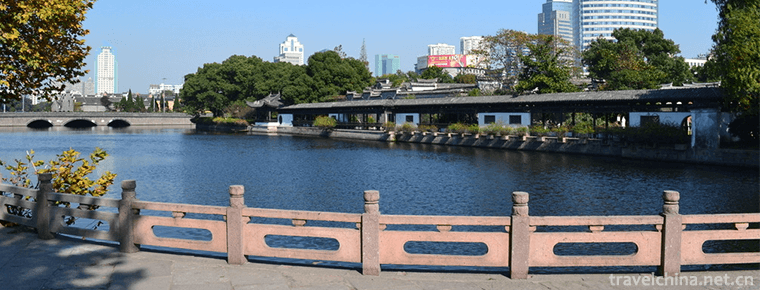
-
waterless rice noodle
Bait silk is one of the special snacks in Yunnan. It is mainly made from rice.
Views: 132 Time 2018-10-17 -
China Yellow River Building
The Yellow River Building of China has the Yellow River China History and Culture Exhibition Hall, the Yellow River Ningxia History and Culture Exhibition Hall, the Yellow River Impression Exhibition .
Views: 158 Time 2018-12-22 -
Yimeng Red Film and Television Base
Yimeng Red Film and Television Base, located in Changshan Villa, Ma Muchi Township, Yinan County, Linyi City, Shandong Province, was built in 2009. It is a comprehensive tourist area.
Views: 164 Time 2019-03-03 -
Legend of White Horse Dragging
The legend of white horse dragging rein is spread in Baima Temple in Jincheng, Shanxi Province. Baima Temple Mountain was originally named Sima Mountain.
Views: 190 Time 2019-04-03 -
Fuzhou Arts
Fuzhou jiuyi, also known as jingyi, belongs to one of the five traditional local songs in Fujian Province, which mainly focus on singing, and is popular in Fuzhou dialect area.
Views: 393 Time 2019-04-29 -
Mi Luo Tuo
Milotta is a myth and ancient song spread in the Yao nationality inhabited areas of Du'an and Bama in Guangxi. It integrates myth, creation and hero. It describes the heroic achievements of the goddes.
Views: 147 Time 2019-06-04 -
Wooden Fish Songs
Muyu song is short for Muyu, also known as Touyu song. It is one of the traditional rap and singing arts in Guangdong Province and belongs to the system of Tanci. It is popular in the Pearl River Delt.
Views: 151 Time 2019-06-06 -
Legend of Su Dongpo
The legend of Su Dongpo is a group of traditional folklore stories evolved from the story of Su Shi, a great writer in the Northern Song Dynasty..
Views: 154 Time 2019-06-16 -
Lao Tzu
Laozi, surnamed Li Minger, is a character of Bai Yang, or posthumous Bo Yang. In the late spring and Autumn period, the birth and death years were unknown. About 571 years ago, it was born in the late.
Views: 194 Time 2019-09-04 -
Yibin white tower
Baita (also known as Dongyan pagoda) is located in Baita Mountain Scenic Area of Yibin Lingang Economic and Technological Development Zone. It was built in 1569, the third year of emperor muzong's reign in the Ming Dynasty..
Views: 111 Time 2020-10-16 -
Transportation in Mianyang
By the end of 2018, Mianyang had 20146 km of highways, 412 km of expressways, 268 km of Railways and 57 civil aviation routes..
Views: 153 Time 2020-12-14 -
History of Nanchong
In the Northern Song Dynasty (960-1127), there were three states in the territory, which governed 13 counties, such as Nanchong (prefecture), Xichong and Xiangru, which were subordinate to Chengdu Fulu..
Views: 167 Time 2020-12-17
